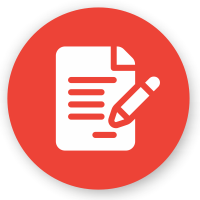 Perspective Article
Perspective Article
Aligning Practice, Policy and Education with Evidence in Complementary and Alternative Medicine
Abraham Rudnick
Department of Psychiatry and School of Occupational Therapy, Dalhousie University, Canada
Abraham Rudnick, Department of Psychiatry and School of Occupational Therapy, Dalhousie University, Canada.
Received Date: May 22, 2019; Published Date: May 31, 2019
Keywords:Evidence, Orthomolecular psychiatry, Practice, Policy, Training
Perspective
Complementary and Alternative Medicine (CAM) is commonly used Harris PE, et al [1], but its outcomes are mixed. For example, some prevention remedies such as Echinacea for secondary prevention of common colds have not been shown to be effective [2]. And some treatment interventions such as actual (compared to simulation) acupuncture for alleviation of some types of chronic pain have been shown to be effective [3,4]. The endorsement of CAM as such – by practicing clinicians and others supporting health care such as policy makers and health educators – when it is not rigorously shown to be more effective than placebo or sham/simulation care, is arguably unethical, as has been demonstrated to be the case with orthomolecular psychiatry [5]. Such endorsement of CAM should thus be addressed from a practice, policy and education perspective.
From a practice perspective, no CAM should be provided (nor offered) by clinicians if there is no robust evidence supporting its effectiveness (and safety) compared to one or more effective (and safe) active interventions. Such independently replicated evidence requires multiple randomized controlled trials and meta-analysis or comparable research such as well-matched quasi-experimental studies and systematic reviewing. From a policy perspective, no CAM should be publicly funded if there is no robust evidence supporting its effectiveness (and safety); robust evidence supporting cost-effectiveness of CAM should be a preference rather than a requirement, as in various clinical situations, such as life threatening health challenges, cost considerations can be viewed as having secondary or marginal importance. And from an education perspective, no CAM should be taught to clinicians (nor arguably messaged to the general public) if there is no robust evidence supporting its effectiveness (and safety). Thus, aligning practice, policy and education with (robust) evidence is crucial for the ethics of CAM.
Acknowledgement
None.
Conflict of Interest
No conflict of interest.
References
- Harris PE, Cooper KL, Relton C, Thomas KJ (2012) Prevalence of complementary and alternative medicine (CAM) use by the general population: a systematic review and update. Int J Clin Pract 66 (10): 924-939.
- Karsch‐Völk M, Barrett B, Kiefer D, Bauer R, Ardjomand-Woelkart K, et al. (2014) Echinacea for preventing and treating the common cold. Cochrane Database Syst Rev (2): CD000530.
- Linde K, Allais G, Brinkhaus B, Manheimer E, Vickers A, et al. (2009) Acupuncture for tension-type headache. Cochrane Database of Syst Rev (1): CD007587.
- Manheimer E, Cheng K, Linde K, Lao L, Yoo J, et al. (2010) Acupuncture for peripheral joint osteoarthritis. Cochrane Database of Syst Rev (1): CD001977.
- Rudnick A (2010) Some philosophical reflections on orthomolecular psychiatry. Journal of Orthomolecular Medicine 25(2): 52-55.
-
Abraham Rudnick. Aligning Practice, Policy and Education with Evidence in Complementary and Alternative Medicine On J Complement & Alt Med. 1(3): 2019. OJCAM.MS.ID.000513.
-
Occupational Therapy; Alternative Medicine; Complementary and Alternative Medicine; Orthomolecular psychiatry
-

This work is licensed under a Creative Commons Attribution-NonCommercial 4.0 International License.






